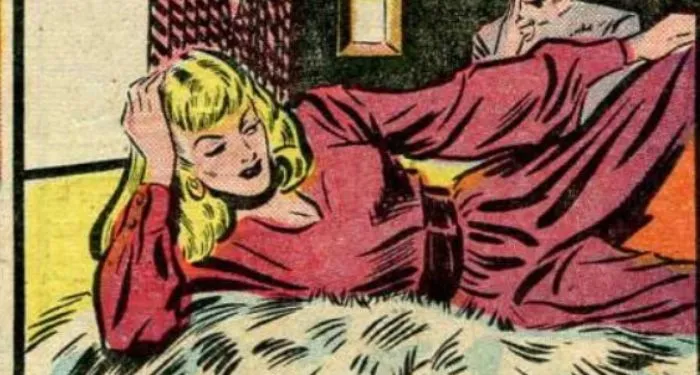
Retro Comic Rewind: Crimes by Women
Some comics go down in history as masterful examples of the craft and are beloved by multiple generations. Others end up at the landfill. In this series, I’ll be looking back on some forgotten series to better understand what kind of comics our ancestral nerds were reading in the days of rotary phones and record players.
Today’s subject: Crimes by Women!
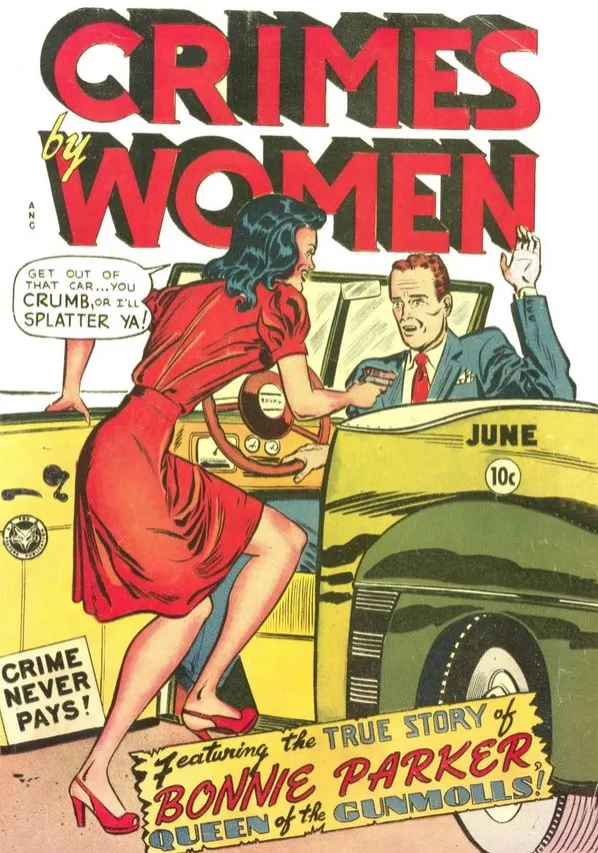
The Context
If you know anything about comics in the 1950s, it’s probably that a) crime comics were HUGE, and b) panic over crime comics (and other genres like horror) led to the near-collapse of the entire comic book industry in the mid-1950s.
You should also know that, back then, comics were not regarded as something just for boys (or middle-aged men, as the case may be). Women and girls were also targeted as audiences, which may partially explain this comic’s decision to spotlight female criminals. The ads in the book for women’s clothing and weight loss regimens prove that, despite the many cheesecake shots, the publisher expected and wanted female readers.
The Creators
As an anthology book from the 1940s and ’50s (published bimonthly from 1948 to 1950, with one last issue released in 1951), crediting the talent wasn’t a priority. Some of the work has a signature, but most doesn’t. Given the mediocrity of the art and the extremely poor editing in some stories, I wonder if this was partly intentional. Who wants to take credit for drawing a woman with her head cranked all the way around like an owl?
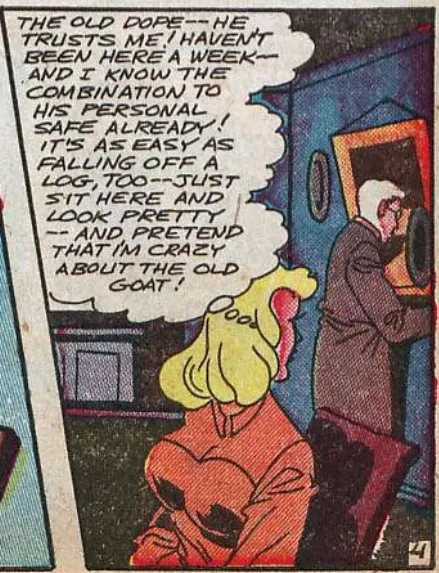
Probably the best art we get is a story from Issue Six drawn by Jack Kamen, who did a lot of work for EC’s revered and reviled horror comics.
Publisher Fox Feature Syndicate is best remembered for creating the superhero the Blue Beetle, which was acquired by Charlton Comics when Fox went bankrupt in the early 1950s. This happened just before Crimes by Women wrapped up, in fact. Charlton did much to revamp the character, but by 1983, financial troubles compelled them to sell Blue Beetle to DC Comics, where he has been ever since.
The Comic
Part of the appeal of this type of comic was that it was all allegedly true. Many of the stories in Crimes by Women claim to be “a true crime story,” but that’s clearly fudging things a bit. Many of the stories follow suspiciously similar beats:
- Woman wants money and excitement but has none, usually due to a boring job or a stingy, yet wealthy, husband
- Woman decides a life of crime is the answer to all her problems
- Woman does a crime and goes power-mad, bossing around her male colleagues and killing people for funsies
- Woman gets her comeuppance, sometimes in a shootout or a fire but more often in the electric chair, which she is forcibly dragged to while begging for mercy
- CRIME NEVER PAYS
It’s also pretty funny how the comic uses art and body language to signal just how far these women have fallen. Unlike the good girls, these femme fatales are not afraid to be assertive. They tell men what to do! They smoke! They WEAR PANTS!
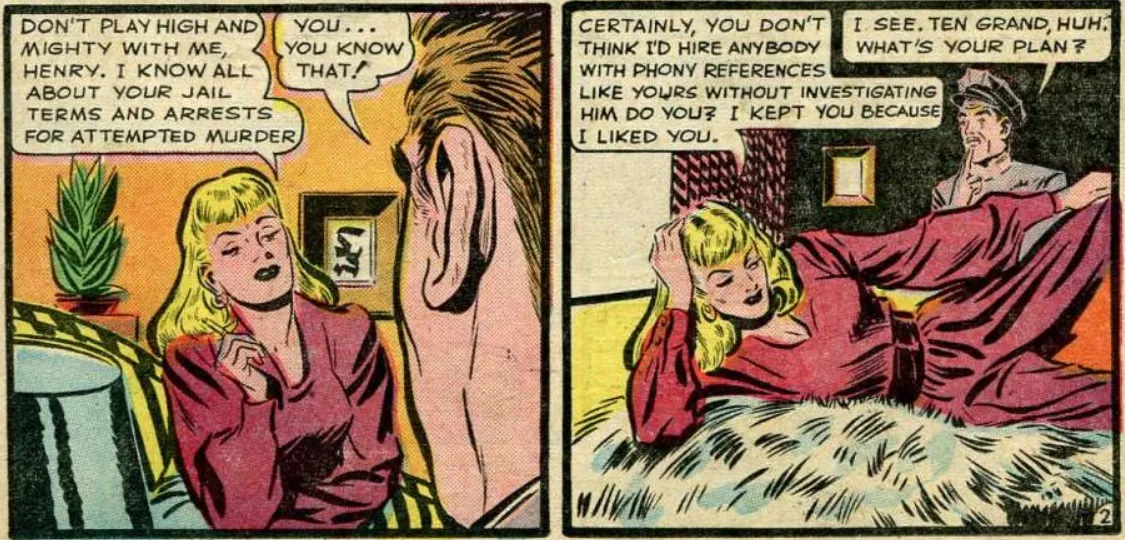
A lot of the source material for these stories is too obscure for an amateur like yours truly to easily track down — I tried googling some of the women’s names and just came up with information about this comic — but there are enough big names featured here for us to get an idea of how “true” these tales really are.
Issue Two tells the story of Belle Gunness, who used personal ads to lure men to her farm, kill them, and steal their money. In the comic, she dies when her house and her ill-gotten gains burn down with her inside. In real life, the fire might have been a ruse to throw off investigators, and Gunness might well have escaped all punishment for her actions. In Issue Eight, the much-maligned Ma Barker fares even worse, as the comic wholeheartedly buys into the FBI’s slander about her being a criminal mastermind rather than collateral damage when the agency killed her in 1935.
But ambiguity wasn’t acceptable for a 1940s crime comic. Criminals are purely evil, always. Criminals must be punished, always. The police are the good guys, always. Even though the Comics Code was several years away, it’s clear the creators felt pressure to mold their books to the whims of the religious and parental buttinskis peering over their shoulders.
In some sense, you could probably label the book as propaganda, but it’s more complicated than that. The copious shots of cleavage and legs betray Fox’s true purpose: to provide salacious entertainment to readers, even if they had to cover their tracks with overbearing messages about how “crime never pays.”
By Issue 10, the “true” part of these crime stories was falling even further by the wayside. At first, I couldn’t base this on anything more than vibes, but “The Terror of Tacoma!” from Issue 12 proves it by being a note-for-note rehash of “Bessie Montez: Finger Woman for the Mob” from Issue Eight.
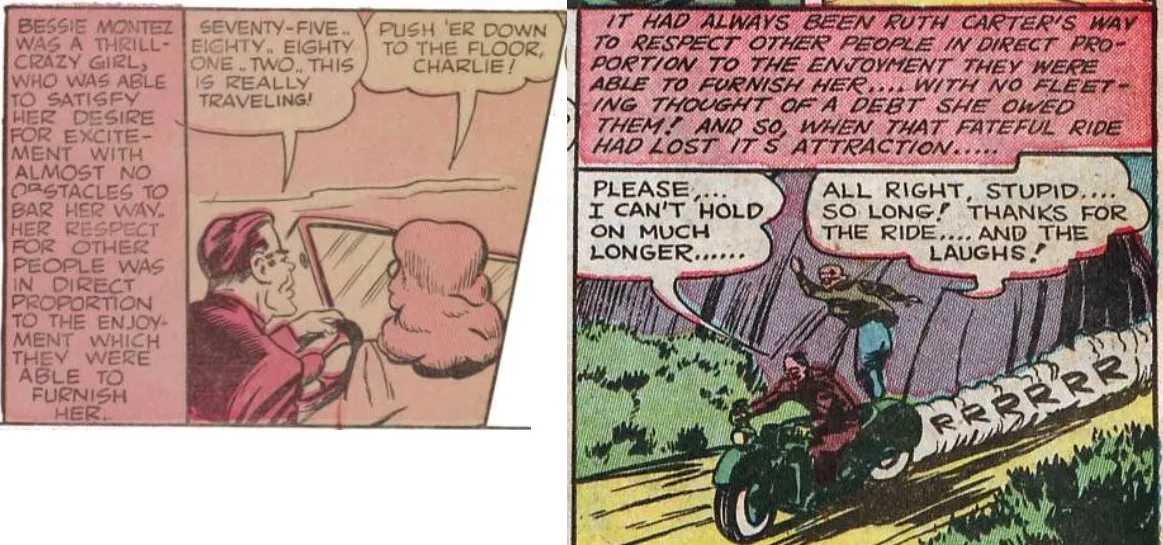
There’s also a change in the stories’ endings, with several women choosing to die by suicide rather than surrender. Still not a great way to go out, but it’s far more empowering than screaming in the electric chair. See: Thelma & Louise versus Angels With Dirty Faces.
Issue 15 tried something even more radical: showing real sympathy for the criminal. The first story in this issue follows a woman with gambling debts forced into a life of crime. Unlike past protagonists, she never buys into the glamor of an illicit life and ends up helping the police capture her co-conspirators.
And then there’s this bit of high comedy.
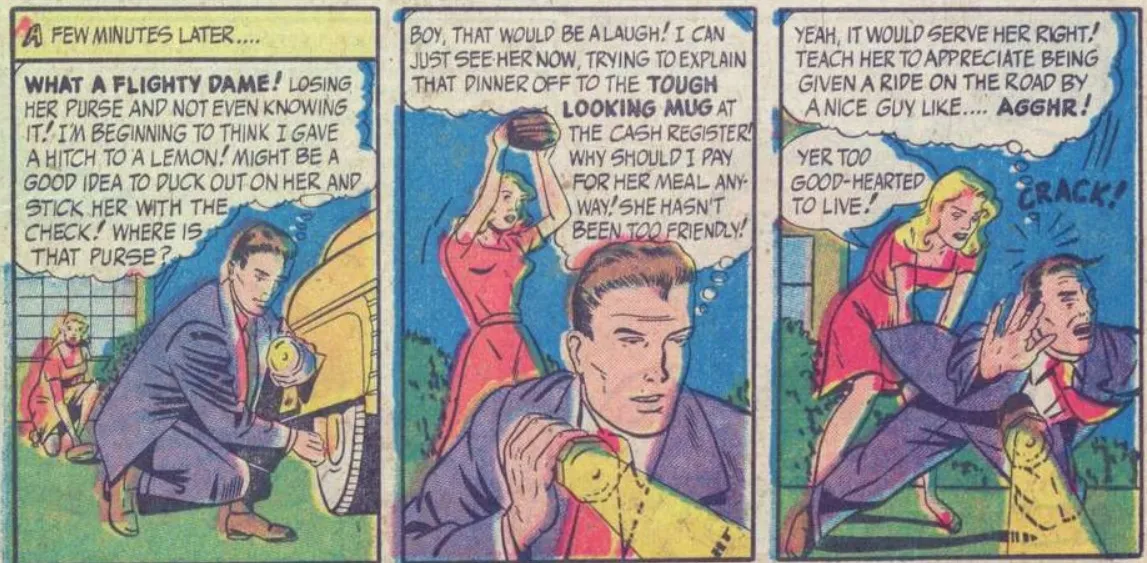
This is honestly hilarious. I don’t even care if it’s true.
The Legacy
This comic was fun and funny in a retro way, but as you can imagine, reading so many stories that follow the exact same plot gets old after a while. There’s very much an “if you’ve read one, you’ve read them all” feeling, especially in the first nine issues.
The legacy of crime comics is not a very happy one. Popular at the time, they became a lightning rod for book banners and politicians looking to score points with said book banners. When the Comics Code Authority came into being, they were all but wiped and never really made a comeback.
Still, Crimes by Women stands out for its focus on female characters who committed crimes rather than fell victim to them, even if their stories are not as “true” as the comic wants you to think.
Want more vintage goodness? Check out previous editions of RCR: Race for the Moon, Stamps Comics, Tippy Teen, Winnie Winkle, Hangman Comics, G.I. in Battle, Adventures in Wonderland, The Man from U.N.C.L.E. (1993), The Arrow, Weird Horrors, and Ghost Rider!











